
FIRST LOOK: 2010 Giant Faith
It’s (finally) time for part two of my series on new bikes from Giant. In the first instalment, I featured the 8” Glory DH bike that was unveiled in Keystone, Colorado. This time, it’s the Faith freeride bike in the spotlight.
The Faith was originally launched in 2005 as Giant’s first full-on freeride bike, and the 7-and-8 bike ushered in an era of long-travel rides for the company. After a couple of years’ service, the Faith was mothballed in 2007. Interestingly, however, it wasn’t taken out behind the barn and shot. Since then, Giant has been working with team rider and Race Face UFC contest winner Kurt Sorge (and Nelson, B.C. resident) to update the frame and bring this bike into the modern era.
The revamped Faith prototype first reappeared on the scene at last year’s Redbull Rampage, and helped carry Sorge to a second place finish in the competition. But it wasn’t the same Faith that the world knew before.
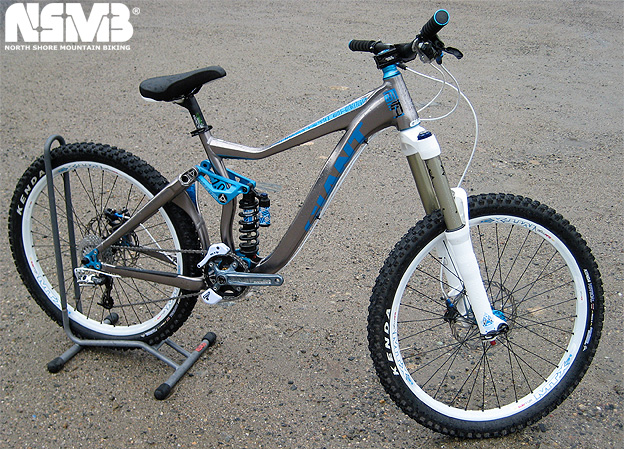
The 2010 Giant Faith 0 is a very distinctive bike that combines a lot of technology with coordinated aesthetics.
There were three changes to the new Faith. First, Giant cut an inch of rear travel from the old Faith. Second, the company built a new frame specifically for this type of riding, rather than tweaking the geometry on a Glory and spec’ing it with a 7” single crown fork as they had been doing to fill the gap in the product line after the first-generation Faith went into hiding. Third, the Faith got the co-pivot frame design as the ’10 Glory.
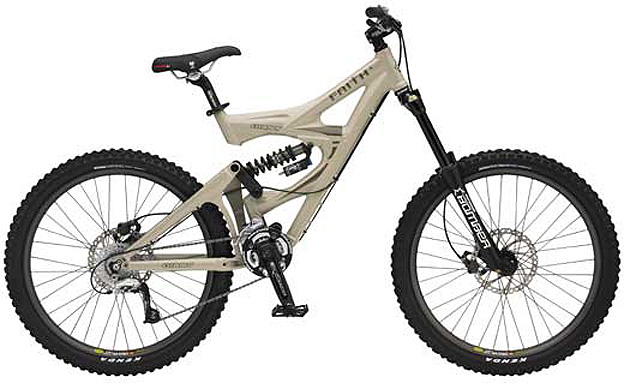
The first-generation Faith was an important bike for Giant, and it had its fans, but it was a tank.
As a result of those changes, the new Faith isn’t so much a redesign of an old bike as it is the introduction of a new bike with a familiar name. It does, however, share several common traits with the ’10 Glory: Maestro suspension (of course), the co-pivot frame design, hydroformed tubing, the OverDrive tapered head tube and a cleaner look. It also went on a serious diet.
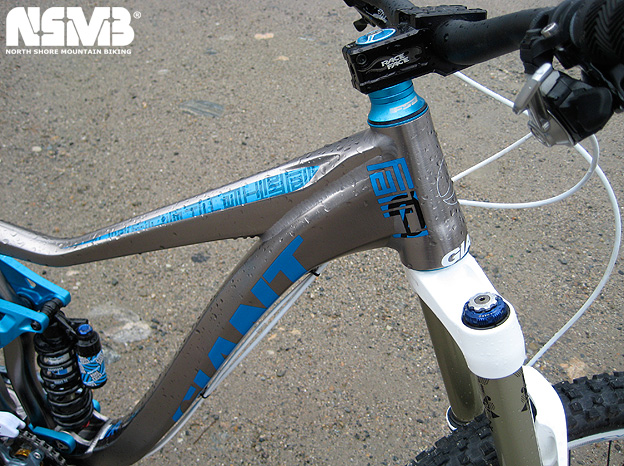
The massive tapered head tube / down tube / top tube junction makes for a very stiff front end. Note the highly manipulated tube shapes.
Weight saving was a priority for Giant engineers when they were designing the Faith. The frame on the 2010 version of the bike is 1,100g (2.4lbs.) lighter than the first generation Faith. Frame weight is 4,060g with shock, mounting hardware and paint. Total weight for a size medium Faith 0 without pedals is 36.8lbs, which will be about 38lbs. once you’ve got a set of flats on there. That weight savings doesn’t mean the bike is flexy, though. Giant claims a 7% increase in stiffness for the ’10 Faith over the first-gen model.
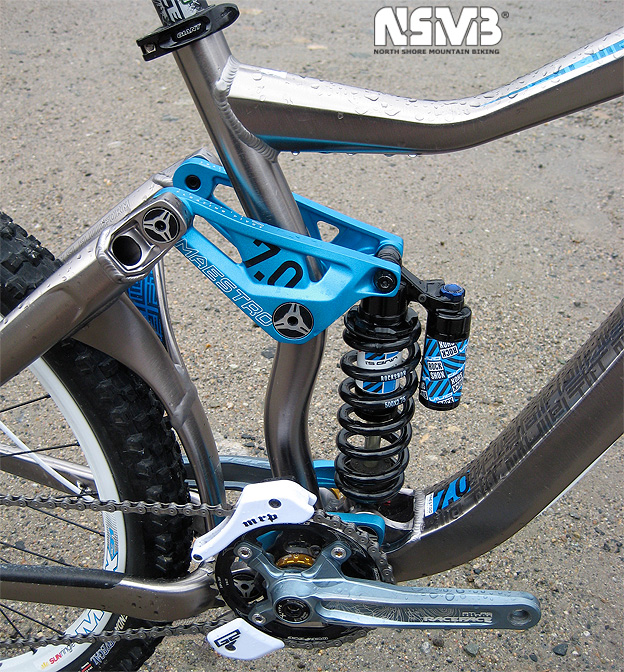
The 7.0 denotes 7″ of rear travel. The seat tube is curved, so you can’t slam the seat post all the way down, but it is possible to run a front derailleur on the Faith if you want.
The Faith also has a couple of unique features, the most significant of which is the replaceable dropouts. Each Faith bike and frameset comes with two sets of dropouts that let the rider change the head angle, bottom bracket height and chainstay length. These two sets of dropouts make it possible to set the bike up with a 66.75° or 66.24° head angle, and 442mm or 445mm chainstays.
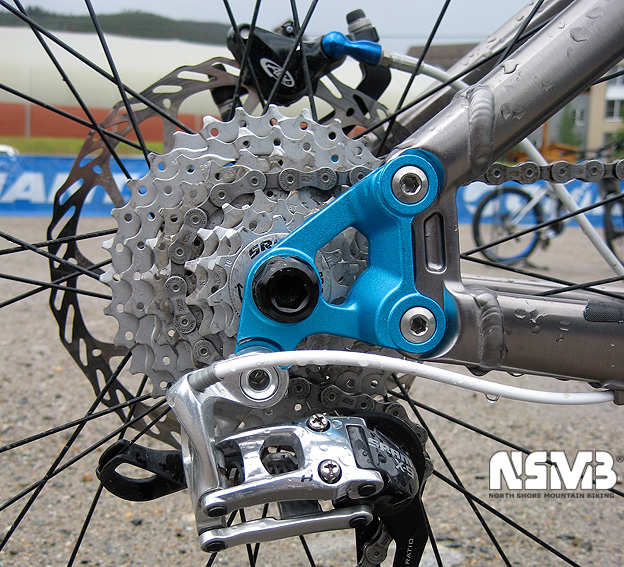
Two sets of rear dropouts allow riders to fine-tune ride characteristics to their own style.
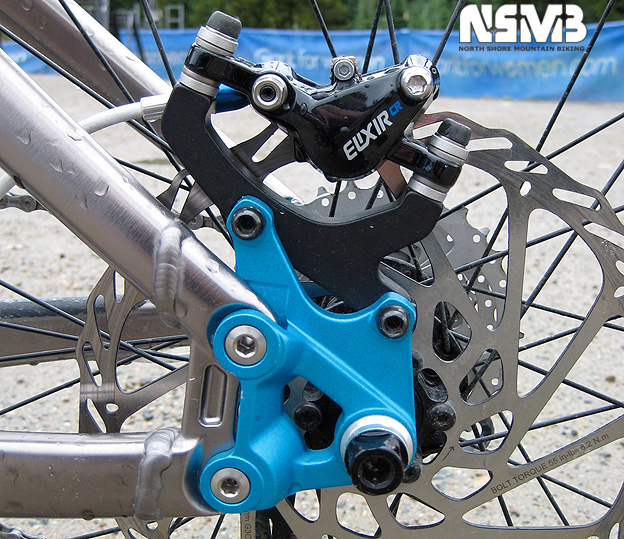
Like the Glory, the Faith uses a rear thru axle that can be removed with an Allen key. The dropouts are the same colour are the other anodized parts on the bike.
Faiths come in XS, S, M and L sizes, and there are two different models to choose from. The Faith 0 comes with a RockShox Totem Solo Air with 180mm travel, a RockShox Vivid 5.1 rear shock, Race Face Respond DH low rise bar and Diabolus D2 stem, SRAM X-9 rear shifter and derailleur, Race Face Atlas FR cranks and an MRP Mini G2 guide made specifically for Giant, Avid Elixir CR brakes with 203/185mm rotors and Kenda Nevegal 2.5” tires. MSRP is CAD$4,599 / US$4,125, but dealers may sell for less.
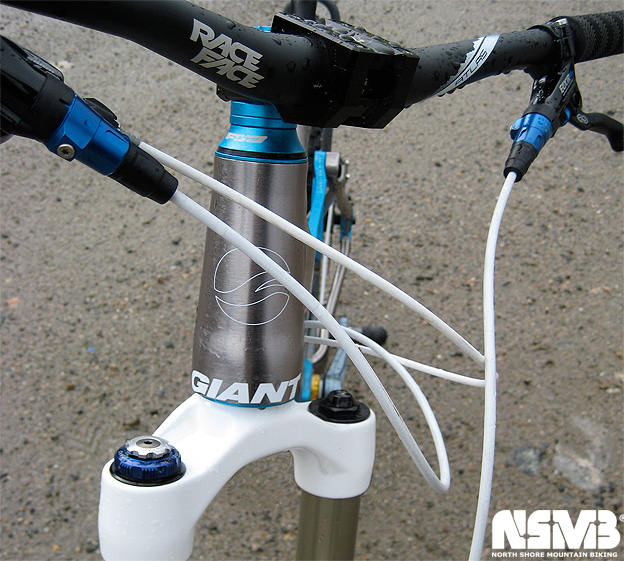
Giant worked with SRAM to spec the bike with some custom-coloured parts. That included white brake hoses and blue adjustment dials on the Elixir brakes. This shot also gives you an idea of the size of the OverDrive head tube.
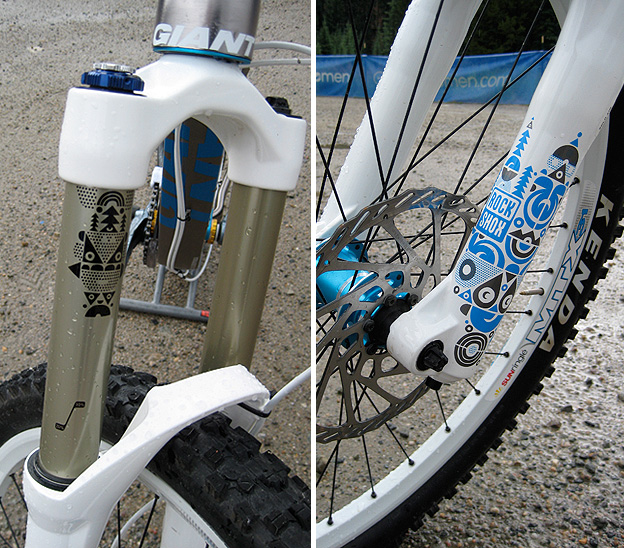
Graphics on the RockShox Totem SoloAir. They don’t have much to do with the rest of the bike, but the colours match up nicely with the overall look of the Faith.
The Faith 1 takes a small step down in componentry, with a Marzocchi 66 RCV fork with 180mm travel, a Marzocchi Roco R rear shock, Race Face Respond DH bar and stem, SRAM X-5 shifters and rear derailleur, Avid Elixir 5 brakes with 203/185mm rotors and 2.5” Nevegals. Interestingly, the Faith 1 comes with a Shimano Saint front derailleur and the RaceFace Atlas shiftguide. MSRP for the Faith 1 is CAD$3,359 / US$3,100. Again, dealers can set their own prices.
The ride and rider impressions
Giant felt that removing an inch of travel from the Faith wasn’t a big drawback, because the quality of travel offered on the bike was good enough to do that. Engineers believed that they didn’t need to use more travel on the bike to cover up for a bad design.
Not having ridden one of the first-generation Faiths since a brief spin on one in 2006, it’s hard for me to say whether the bike rides any better (or worse) with 7” of rear travel than with 8″. And while the geometry chart for the bike gives you some idea of what this bike will be like, it doesn’t tell the whole story.

Four sizes, all with the same head angle. The top tube lengths are where they should be, and shorter riders will really appreciate the lower standover height. The red numbers indicate the changes you get with the second set of rear dropouts.
The first thing I noticed about the Faith is that it was much better suited to the trails at Keystone than the Glory. The bike was faster in this more rolling terrain and easier to get up to speed.
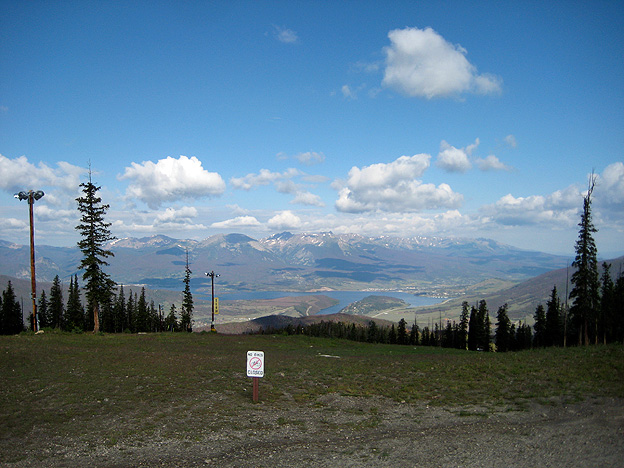
Conditions on Day 2 at Keystone were decidedly better than on the first day. And it was possible to see how spectacular the area really was without the oppressive cloud cover.
Heading into the technical sections on the hill, the combination of the single crown fork and Kenda tires made the Faith much more enjoyable to ride. I could cruise through the slower sections and still carry that speed into the rock gardens. I was also able to enjoy some of the wooden features on the hill, thanks to the predictable Nevegal tires. They’re a much better option than the Michelins on the Glory.
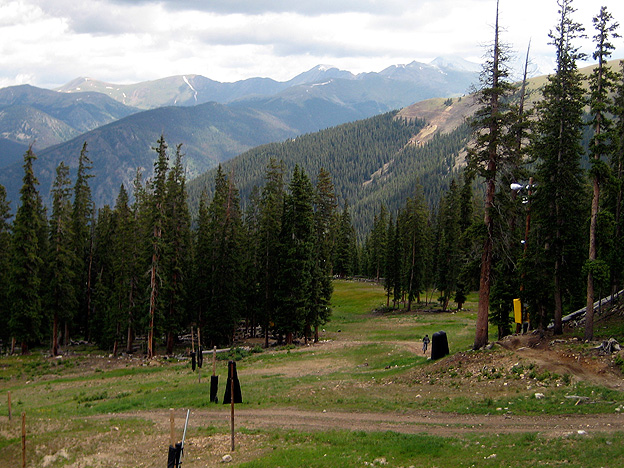
It was hard to complain about the scenery at Keystone. A rider heads down Cowboy Up (right of centre), one of the black trails that riders access at the top of the hill.
The 66.8° head angle made for a bike that was sufficiently responsive when necessary but not twitchy by any means. I found that I was able to pedal through the chunder and over stunts without any problems, and then hit the technical sections without having to make major changes to my positioning on the bike.

There were a number of interesting structures scattered around the hill at Keystone. Some of them had shingles for traction, while others had chicken wire. Unfortunately, they were built with dimension lumber so they were a little slippery when wet.
It’s difficult to draw too many conclusions about a bike after three runs on it, but the Faith looks like it will be a solid big bike for riders who like to go fast as well as hit up some stunts or technical sections. It’s not a lightweight, but 38lbs. definitely puts it in the climbable range (yes, MBA, it is possible to climb on a bike that weighs over 30lbs.)

One of the most entertaining trails on the mountain was Jam Rock. Builders combined a boardwalk with natural features to make for a challenging but fun section of trail. My only complaint was that it was too short.
Spec on both models of the Faith, as well as the price, should make it an appealing option for people interested in a bike that’s designed to be fun on the way down, regardless of whether that’s at the local bike park or shuttle run. And it’s a bike that can still be ridden up, if you’re willing to put in some effort.
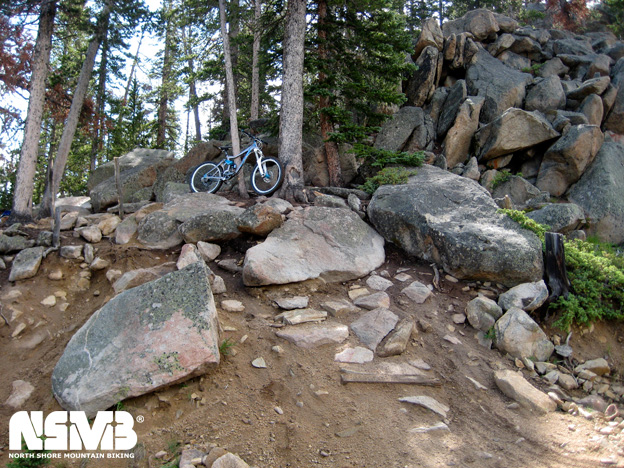
The boardwalk above leads into this rocky section. The line heads over the rocks just below the rear wheel of the bike, then over the large rock in the centre of the photo. It may not look like much, but it required some concentration to pull off cleanly. The Faith was certainly up to the task.
Stay tuned for an in-depth report on the Faith over the next few months. I’m curious to see how this new bike with the familiar name handles a serious beatdown.
So, what do you think about the Faith? Is it going to be on your list of possibilities for a new ride in 2010? Go forth to the boards and share your wisdom as only you know how.







Comments
Please log in to leave a comment.